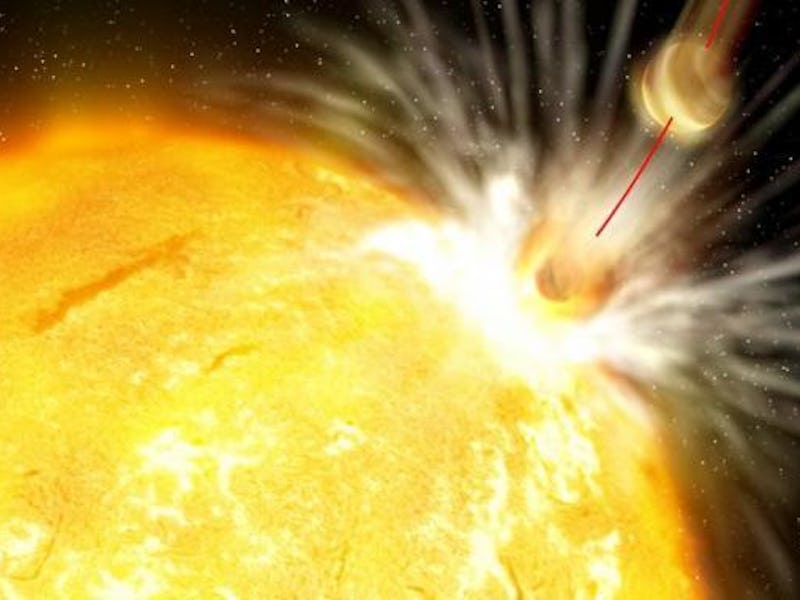'Rogue One' Is Bogus, Here’s an Actual Death Star

An international collaboration between scientists just confirmed the rare discovery of a sun-like star hosting a system of planets — some of which the star might have ingested. The parallels between this star and our own obviously beg the question of whether Earth will one day face a similar fate as these unfortunate exoplanets; for now at least, the team can’t say one way or the other whether this is a normal outcome of the planet formation process around stars like this. The research was published in the journal Astronomy and Astrophysics.
“It doesn’t mean that the sun will ‘eat’ the Earth anytime soon,” said co-author Jacob Bean, assistant professor of astronomy and astrophysics at UChicago, in a news release. “But our discovery provides an indication that violent histories may be common for planetary systems, including our own.”
We might not be sure of the Earth’s fate, but computer simulations do show that eventually (like, several billion years eventually, not here’s-a-new-thing-for-you-to-worry-about eventually) Mercury will succumb to repeated gravitational nudges from other planets and ultimately fall into the sun.
A star that scoops up helpless planets like so many Pac-Man dots is obviously fairly cool in its own right, but it could actually help us understand not just what will happen to Mercury, but the overall process by which planet systems evolve. We’ve identified about 2,000 exoplanets over the course of the last two decades, but it’s not common to find ones orbiting stars that resemble our own Sun — when we do, we call them “solar twins,” and it’s these stars that are most optimal to study. This particular star, HIP68468, is about 300 light-years from Earth.
Using the Atacama Large Millimeter Array (ALMA) in Chile, the researchers identified two objects around HIP68468 they believe to be planets (the data still needs to be confirmed) as well as evidence that there were once others, which could have either been ingested by the star or else possibly ejected from the system. But HIP68468’s composition — extraordinarily heavy in lithium, as well as a few other elements — makes it a likely candidate for the former explanation. Lithium is destroyed in stars over time, but planets tend to store it simply by virtue of maintaining a lower, more survivable temperature. Since this star has such a surplus, it’s a good bet that it got it by cannibalizing the planets in its system.
“It can be very hard to know the history of a particular star, but once in a while we get lucky and find stars with chemical compositions that likely came from in-falling planets,” said Debra Fischer, a professor of astronomy at Yale University who was not involved in the research, in the news release. “That’s the case with HD68468. The chemical remains of one or more planets are smeared in its atmosphere…It’s as if we saw a cat sitting next to a bird cage…If there are yellow feathers sticking out of the cat’s mouth, it’s a good bet that the cat swallowed a canary.”